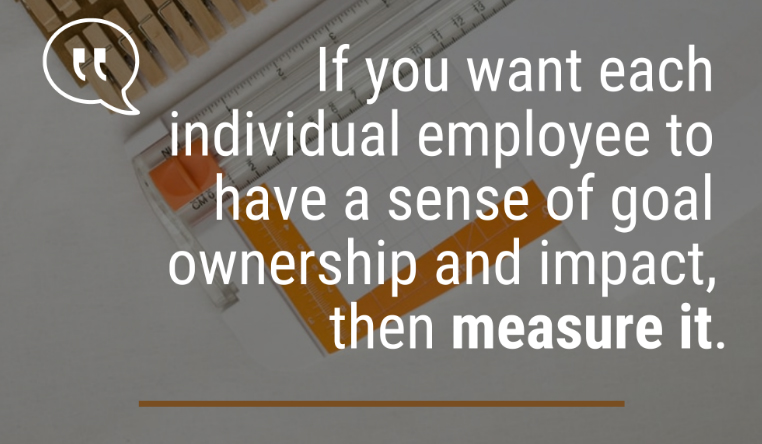
By Peter Myers, Senior Vice President, DDJ Myers, Ltd.
Employee engagement, satisfaction, and internal Net Promoter Scores are now common practices; even the NCUA is focused on increasing its employee engagement. As a consulting partner with a talent–management focus, we’re all in favor of organizations improving their cultures. “Culture eats strategy for breakfast,” right?
However, we’ve seen some organizations hyperfocus on tactical engagement steps as the ends and not the means. Hosting virtual team happy hours and passing out electronic food delivery cards are all great. But many execs view these as cultural busy-ness rather than lasting change.
In our many years of work with credit unions around the country, we’ve found a few lasting ideas and techniques that we share. We start by asking what we need to do to help the organization achieve its strategic objectives. And we believe that’s not just a question for the executives, but one for every member of the organization. Many teams get this wrong with staff surveys that ask for feedback without empowerment, which often leads to a long list of ideas or complaints. If you want each individual employee to have a sense of goal ownership and impact, then measure it. That’s easier said than done, but we have some ideas.
Read More >

The opportunity is to shift the focus to being more practical and pragmatic and to implement a practice that accelerates strategic dialogue and boosts board/CEO alignment
Few board responsibilities have more potential for positive organizational impact than evaluating CEO performance. When done well, this process can generate ongoing powerful and meaningful conversations between directors and the chief executive and align them all in the same strategic direction.
In the Filene Institute report, “Tracking the Relationship Between Governance and Performance,” researchers concluded, “Of all the measured relationships, the only governance practice that yielded a strong positive correlation with actual ROA performance was whether boards felt they had an effective CEO evaluation in place.”
https://filene.org/learn-something/reports/governanceperformance
At the same time, many boards are uncomfortable conducting these performance reviews, and many CEOs are unhappy about the way they are done. There is typically minimal dialogue between the two parties and no clear direction to guide the CEO’s performance going forward. Both sides tend to see this process as a necessary—but not necessarily useful—exercise.
At the end of the day, the board-CEO relationship does not need another archaic construct or arduous process putting unnecessary strain on the conversation. The opportunity is to shift the focus to make these evaluations more practical and pragmatic and to implement a practice that accelerates strategic dialogue. The nine hallmarks of a strategically designed and utilized CEO performance evaluation include:
1. Reinforcing Strategic Priorities
First and foremost, the CEO performance evaluation should be viewed as a tool or an action item that further facilitates the manifestation of the strategic plan and its priorities. The process of identifying the characteristics and skill sets the CEO needs to lead the credit union stimulates rich conversations among directors. It provides a framework to align directors and the CEO behind these attributes and to guide discussions throughout the year.
2. Taking a Longer View of What Matters Most
Identifying those measurable key characteristics and solidifying the performance evaluation method should be designed to reach “evergreen” status. You don’t want to spend a lot of time and effort developing a survey and process that is relevant for this year but needs to be completely overhauled next year. This requires an upfront investment of time and commitment of energy by both the board and CEO to ensure the input and output rise to the level of significance to thrust alignment into the future.
3. Encouraging Continued Growth
The challenges and opportunities before your credit union are ever-changing, so the CEO will need to develop new skills and knowledge to keep pace. An effective evaluation process not only acknowledges but encourages the need for growth. The recognition that some capabilities will be a work in progress over several years gives the CEO permission to not be perfect and instead embrace a growth mindset and seek out developmental opportunities. This is in contrast to implying that a five out of five (or whatever scale you’re using) across the board is the expectation. Putting it another way, if your high-performing CEO receives an abundance of fives out of five, his or her first thought is likely, “Well, that feedback is not helpful.”
4. Talking Through the Basis for Evaluation
We recommend that the board plans a frank discussion of survey results before delivering the evaluation to the CEO. The objective is to uncover and get the alignment opportunities squared away so the board can speak with a unified voice once the evaluation is formally, and even informally, delivered.
For example, if most directors strongly agree that the CEO demonstrates a specific characteristic, but one or two board members strongly or even slightly disagree, that disparity presents an opportunity for at least one person to learn something. It may be that directors on one side of the issue or the other have information that is not universally known but should be shared. More than once we have witnessed a director acting on incomplete information, which shows up as a negative scoring on the CEO’s performance evaluation. Even in this occurrence, at least one person learns something. Again, the goal is reaching board alignment on the CEO’s past performance, providing a framework to guide his or her future performance.
Along the same lines, the board’s submission of the formal evaluation to the CEO should be followed up with a conversation in which the executive can ask clarifying questions. The directors and the chief executive can discuss at this meeting which characteristics are working very well and further understand any areas where there’s a significant difference between the board’s performance ratings and the CEO’s self-evaluation.
5. Incorporating a Management Component
The CEO could adapt the evaluation instrument for use with his or her executive team to gain additional performance feedback. We don’t see this happen often, but it can be an illuminating exercise if the managers and executives involved in this process believe that the CEO is open to and looking forward to honest feedback, learning and growing, and doing the right thing as a leader. Without a super duper foundation of trust already in place, this process will likely not produce useful input. It could do more harm than good if not proctored correctly.
6. Supporting Succession Planning and Executive Recruitment
In the five-year roadmap of best practices we recommend for the years leading up to the CEO’s planned retirement, the development of a robust evaluation methodology can help ease the transition for the next chief executive. Having a strategy-focused, high quality evaluation process is also a big selling point for high-caliber candidates as a sign that the board is committed to being in an ongoing partnership and accountability conversation (risk vs. rewards).
When boards don’t have an effective process in place during a change in leadership, that gap places an extra burden on the new CEO. Incoming executives have so much to do already that the need to co-develop a new evaluation system with the board (or likely do it on their own) may feel like throwing a bag of bricks to a person treading water. To say the least, it’s not helpful.
7. Revealing and Supporting Directors’ Perspectives
One of the most surprising elements of a comprehensive evaluation process is that when directors are assessing the CEO’s characteristics, they ultimately learn that their assessment is actually a reflection of themselves. Each director’s submitted opinion reflects what was retained in his or her mind or colored by his or her perspectives.
In our practice, we’ve witnessed a CEO doing X, the board witnessing X, and then six months later a director then negatively dings the CEO for not doing X. It just was forgotten. It happens. Conversely, if a single director’s evaluation calibration holds a lower or extremely high bar for success, that’s likely a reflection of the director as a person. You’ve heard it before, “I never give someone a five out of five as a matter of principle.” The point being, make sure that everyone is on the same page about the methodology. This is an important process, and directors should be conscious of how and why their opinions have been formed.
8. Acknowledging That ‘Learning’ and ‘Action’ Are the Operative Words
Learning only occurs when a relatively permanent shift takes hold and produces new actions. Providing examples of historic and desired future learnings and actions allow CEOs to understand what to do with the historic evaluation and cognitively situate themselves in the future. This may sound like, “The general themes of the CEO’s performance and requests for future action include the following… .”
9. Facilitating a Stronger Board-CEO Partnership
In short, an effective evaluation methodology is not a once-a-year assignment but an organizing system to guide ongoing interactions between the board and chief executive. A well-designed and executed evaluation process guides the coordination of elements throughout the year, both for the board and the CEO. Applying a strategic level of intentionality paves a smoother path for improved performance across the credit union and for serving the members–which, of course, is what the work of the board and CEO is all about.
Apply It to Your Boardroom
- What do you like about your board’s current CEO evaluation process?
- What does your CEO like about your board’s current CEO evaluation process?
- Which of the nine hallmarks outlined in this article might help your board do a better job of strategically evaluating your CEO?




